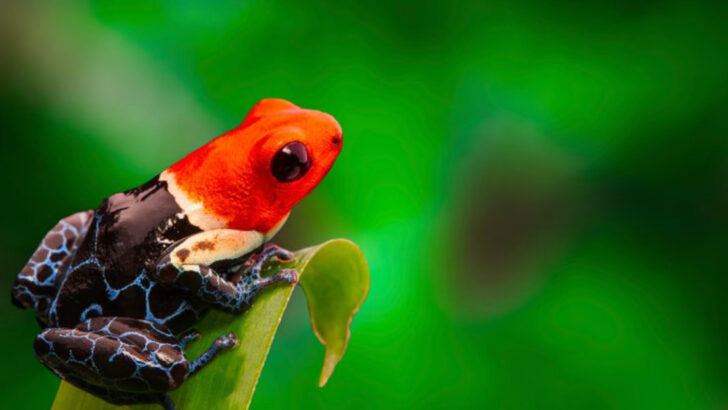Some of nature’s most gorgeous animals come with a deadly secret.
They glitter. They glide. They practically beg to be touched.
But one wrong move, and that stunning little frog or jewel-toned snail could leave you gasping for breath—or worse.
Toxic doesn’t always look terrifying. Sometimes, it’s wrapped in feathers, fur, or flawless color palettes that belong in a museum. These 17 creatures lure you in with beauty, then strike with venom, poison, or paralyzing defenses.
From birds that carry neurotoxins in their skin to sea creatures that paralyze without a sound, this list is proof that pretty can be perilous.
Still feel like petting that shimmering blue critter? You might want to read this first.
Blue-Ringed Octopus
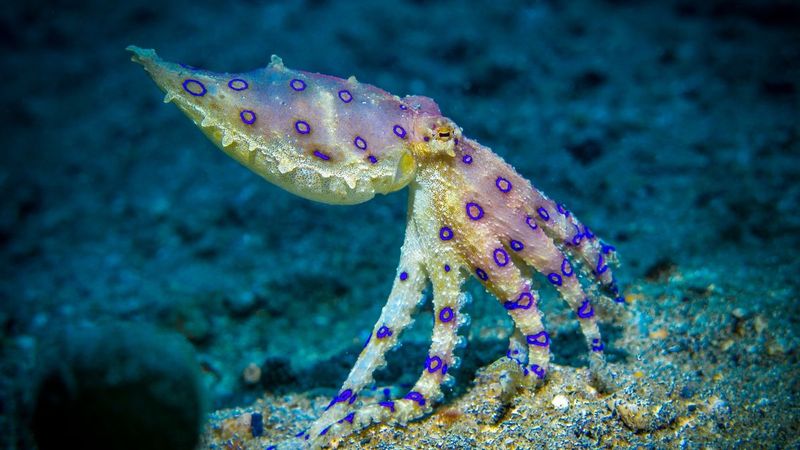
The blue-ringed octopus, as small as a golf ball, captivates with its iridescent blue rings. These vivid patterns are not just for show; they signal danger. Found in tide pools and coral reefs of the Pacific and Indian Oceans, this tiny octopus harbors a venom powerful enough to kill humans. One bite can cause paralysis and respiratory failure. Despite its size, the blue-ringed octopus is among the deadliest sea creatures. Its venom contains tetrodotoxin, a potent neurotoxin. Always admired for its striking appearance, this octopus serves as a reminder that beauty can be deadly.
Poison Dart Frog
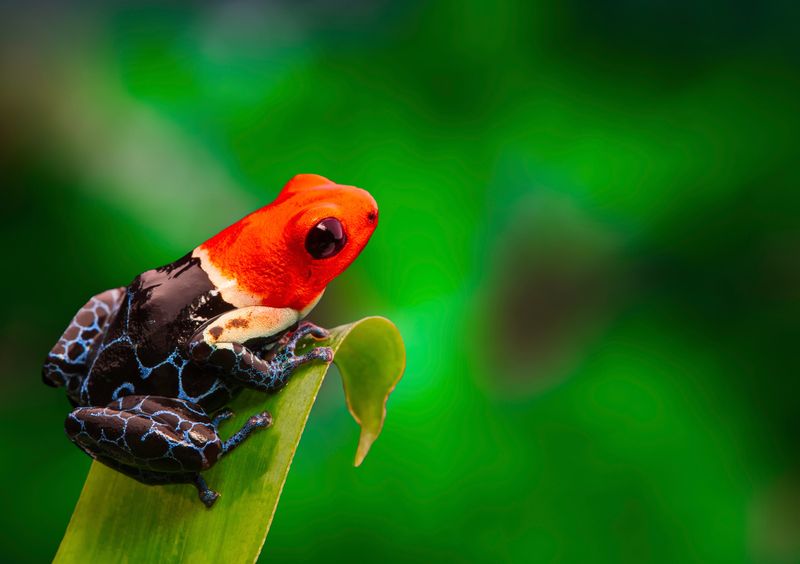
In the lush rainforests of Central and South America, the poison dart frog dazzles with vibrant hues. These small amphibians, often no bigger than a paperclip, flaunt colors that range from yellow to cobalt blue. Their vivid colors serve as a warning to predators of their toxicity. Indigenous tribes have used their potent toxins for hunting, coating blow darts with the frog’s secretions. These frogs accumulate toxins from their diet of ants and beetles. Despite their tiny stature, they hold a powerful defense mechanism, making them one of the most toxic animals on Earth.
Box Jellyfish
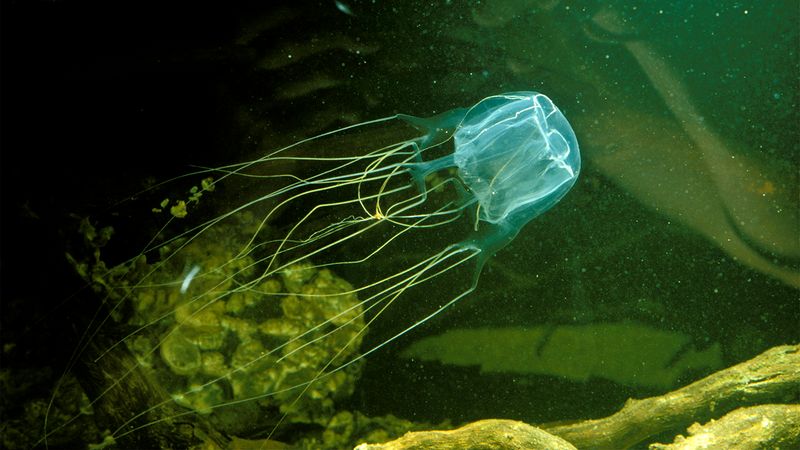
Drifting serenely in the waters of the Indo-Pacific, the box jellyfish mesmerizes with its ghostly translucence. However, beneath this delicate appearance lies venom capable of causing cardiac arrest, paralysis, or even death in humans. Its tentacles, extending up to three meters, contain nematocysts loaded with toxins. Known as the “sea wasp,” its sting is excruciatingly painful. Despite its danger, the box jellyfish is a marvel of nature, using its venom primarily to capture prey. Its silent, graceful presence serves as a stark reminder of the hidden dangers lurking in the ocean’s depths.
Brazilian Wandering Spider
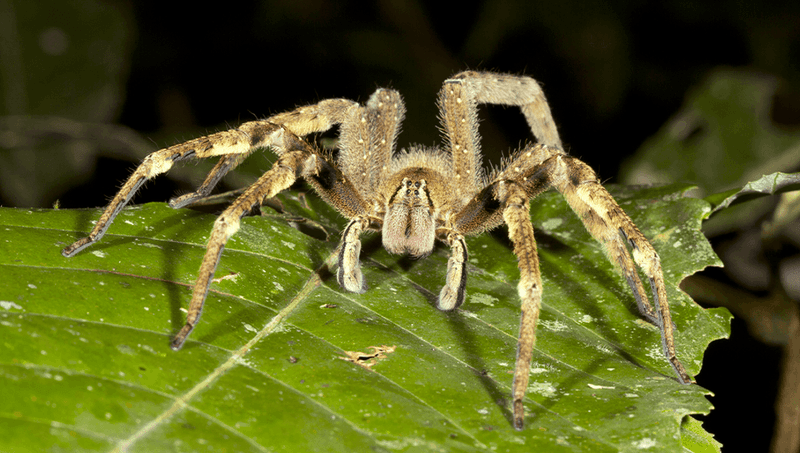
With a name that strikes fear, the Brazilian wandering spider prowls the forest floors of South America. Unlike web-building spiders, this arachnid hunts actively, using venom to subdue prey. Its venom is potent and can cause intense pain, breathing difficulties, and even death. Despite its reputation, it plays a crucial role in controlling insect populations. This nocturnal predator, often found in banana plantations, surprises with its boldness. Known as the “banana spider,” its venom is medically significant, inspiring research into treatments for conditions like erectile dysfunction.
Stonefish

Camouflaged amidst the ocean floor, the stonefish is the master of disguise. Often mistaken for a rock, this fish can inject venom through its dorsal spines, causing excruciating pain, swelling, and even death. Found in the coastal regions of the Indo-Pacific, it is the most venomous fish known. The stonefish uses its venom primarily for defense, deterring predators with its painful sting. Despite its unattractive appearance, it plays a vital role in its ecosystem, controlling prey populations. Its ability to blend seamlessly into its surroundings is both a survival tactic and a deadly trap.
Pufferfish
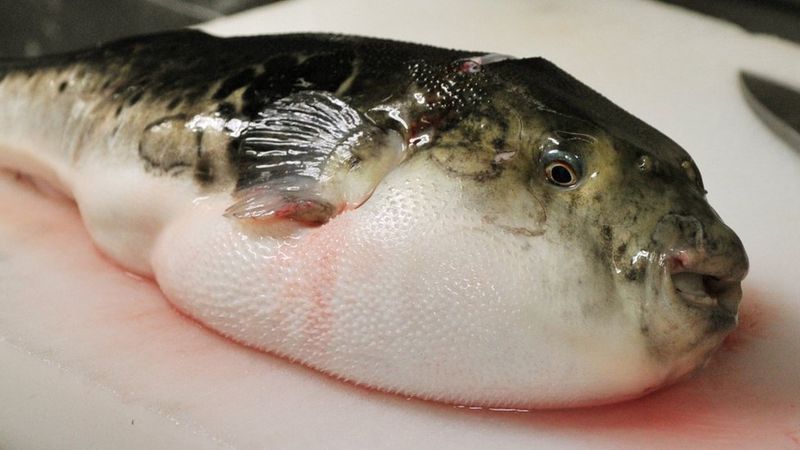
The pufferfish, with its unique ability to inflate, is both charming and deadly. Found in warm and temperate ocean waters, it harbors tetrodotoxin, a potent poison. This toxin is lethal to humans, and there is no known antidote. When threatened, the pufferfish inflates, displaying spines that deter predators. Despite its dangers, it is a delicacy in Japan, known as fugu, prepared by licensed chefs who know how to avoid the toxic parts. This fish embodies a fascinating paradox: its playful appearance conceals a deadly secret within its flesh.
Cone Snail
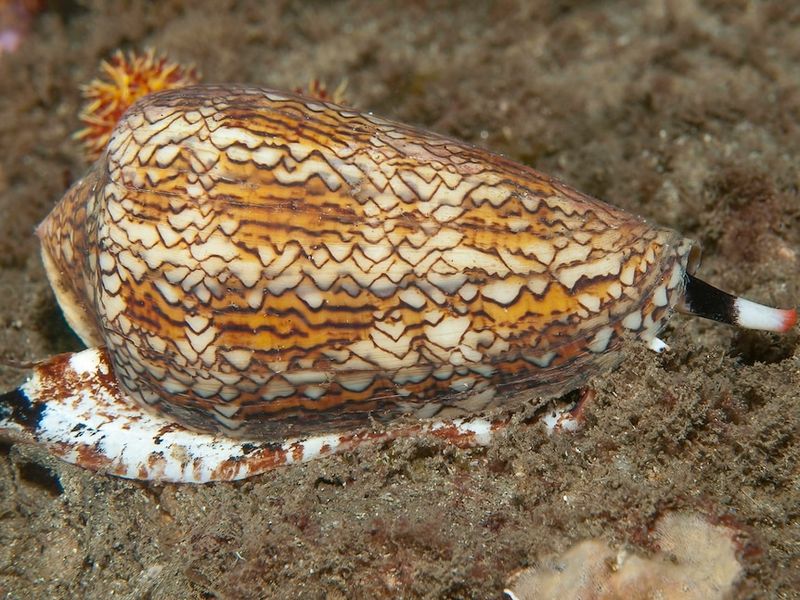
Beneath the ocean’s waves, the cone snail lures with its beautifully patterned shell. Found in tropical and subtropical seas, this snail is a proficient hunter. It uses a harpoon-like tooth to inject venom into prey. The venom, known as conotoxin, is highly toxic and can be fatal to humans. Its beautiful exterior belies its lethal nature. Scientists study conotoxin for medical applications, exploring pain relief and other treatments. This snail’s dual nature as both a marvel of beauty and a deadly predator highlights the complex interplay of aesthetics and danger in nature.
Komodo Dragon
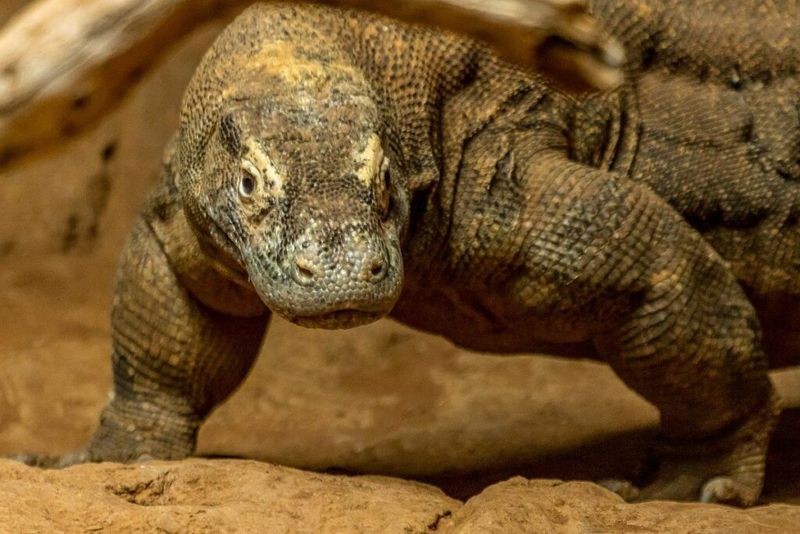
The Komodo dragon, the largest living lizard, roams the Indonesian islands with an air of ancient menace. Its saliva contains toxic bacteria and anticoagulants, making its bite deadly. Preying on deer, it uses cunning and patience to overcome much larger animals. Despite its fearsome reputation, it is a vulnerable species, with conservation efforts underway to protect its diminishing habitat. The Komodo dragon’s presence is a reminder of a time when reptiles ruled the land. Its ability to kill with a single bite has fascinated and terrified humans for generations.
Slow Loris
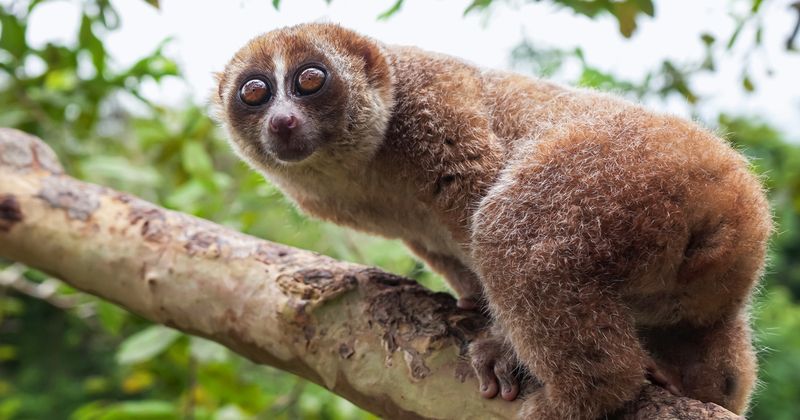
The slow loris, with its wide, endearing eyes, is a surprising bearer of venom. This nocturnal primate, native to Southeast Asian forests, secretes venom from glands on its elbows. Mixing the secretion with its saliva, the slow loris delivers a toxic bite. The venom can cause allergic reactions and pain. Despite its toxicity, it is often illegally captured for the pet trade. Conservationists work tirelessly to protect these gentle creatures. The slow loris’ enigmatic nature and endearing appearance mask a hidden danger, highlighting the complex dualities present in the natural world.
Platypus
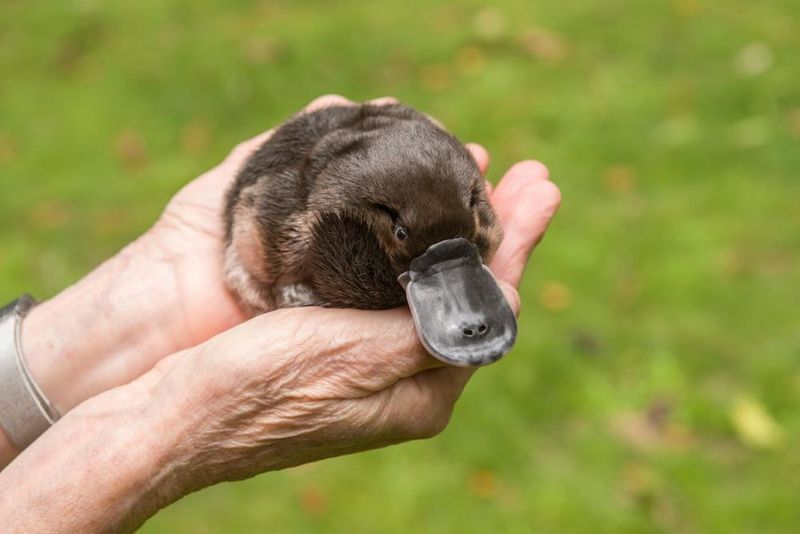
The platypus, an oddity of evolution, captivates with its duck-bill and webbed feet. Native to Australian waterways, the male platypus has venomous spurs on its hind legs. While not lethal to humans, the venom causes severe pain and swelling. This monotreme, laying eggs instead of birthing live young, is an evolutionary marvel. Its unique characteristics have puzzled scientists since its discovery. Despite its endearing appearance, the platypus wields its venom in territorial disputes with other males. This unusual blend of traits makes the platypus a fascinating study in evolutionary biology.
Gila Monster
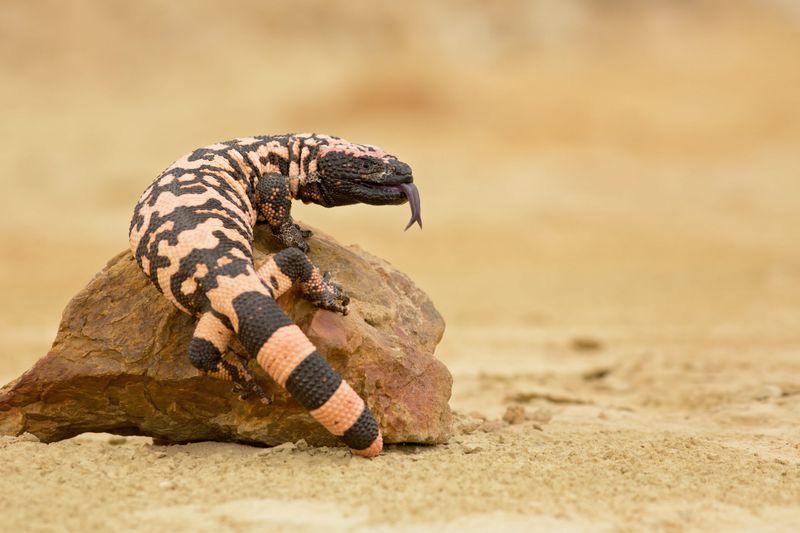
The Gila monster, one of the few venomous lizards, thrives in the deserts of the southwestern United States. Its bright orange and black pattern warns of its toxic bite. Though slow-moving, this lizard can deliver a painful, venomous bite when threatened. It uses its venom primarily for subduing prey. The Gila monster is a symbol of resilience, adapted to harsh desert environments where survival is a constant challenge. Its venom, while not typically lethal to humans, has been studied for potential medical applications, including treatments for diabetes.
Hooded Pitohui
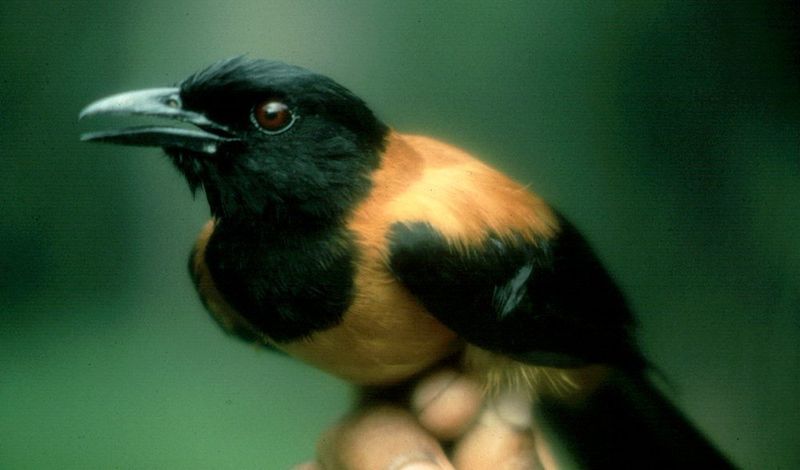
The hooded pitohui, native to New Guinea, is one of the few known toxic birds. Its bright plumage warns of its toxic nature. The bird’s skin and feathers contain batrachotoxin, a potent neurotoxin. This toxin deters predators, allowing the pitohui to thrive in its forested habitat. The pitohui’s toxicity is believed to come from its diet, similar to poison dart frogs. This bird’s vibrant appearance and toxic defenses are a testament to the diverse strategies of survival in nature. Its discovery has intrigued ornithologists and biologists alike.
Spanish Fly
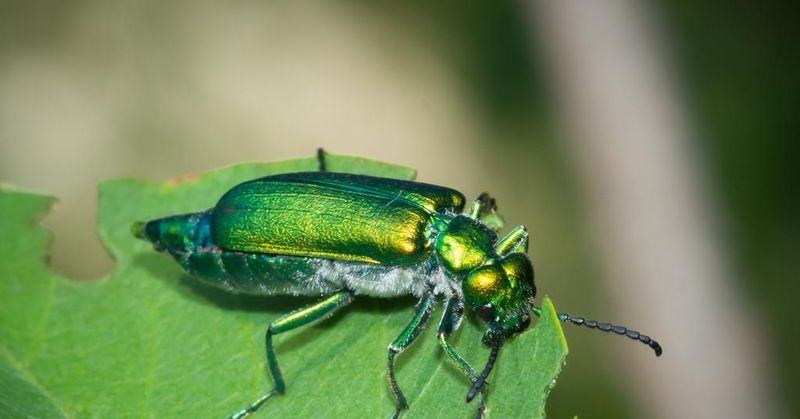
The Spanish fly, a misnomer for a beetle, captures attention with its metallic green sheen. Found in Europe, this beetle secretes cantharidin, a toxin used historically as an aphrodisiac but highly toxic in larger doses. Cantharidin causes blistering on contact and can be fatal if ingested. The Spanish fly’s toxic reputation has overshadowed its role in its ecosystem. Despite its dangers, it is a subject of fascination and caution. This beetle’s dual nature as both a toxic hazard and historical curiosity makes it an intriguing and cautionary tale.
Lionfish

The lionfish, with its striking striped appearance and flowing fins, is a sight to behold in the Atlantic Ocean. However, beneath its beauty lies venomous spines that can cause extreme pain, nausea, and breathing difficulties. Native to the Indo-Pacific, it has become invasive in the Atlantic, threatening local marine life. Its venom serves as a deterrent to predators, but its proliferation is a concern for conservationists. The lionfish’s beauty and danger encapsulate the complex relationship between aesthetics and ecological impact, prompting discussions on control and balance in marine ecosystems.
Cassowary
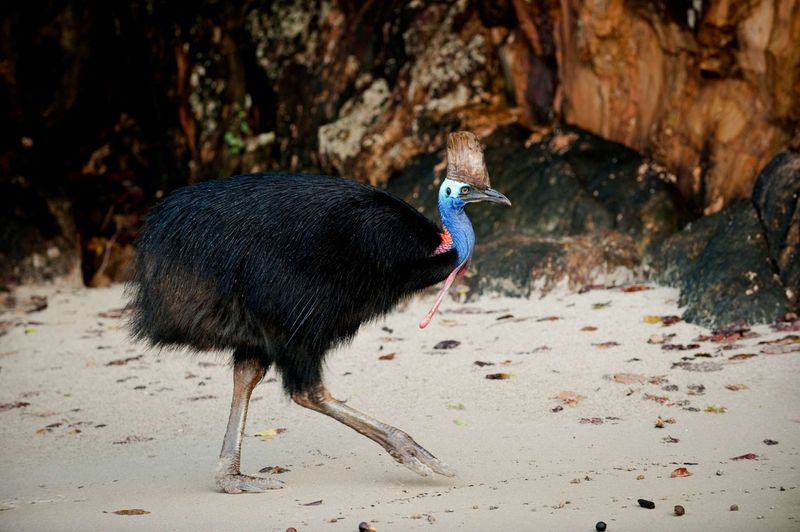
The cassowary, a flightless bird native to the rainforests of New Guinea and Australia, commands attention with its vivid blue skin and helmet-like casque. Though not venomous, it is considered dangerous due to its powerful legs and sharp claws. Capable of inflicting serious injury, it defends itself fiercely when threatened. Despite its intimidating reputation, the cassowary plays a crucial role in seed dispersal, maintaining the health of its ecosystem. This bird’s formidable presence and ecological importance highlight the delicate balance of beauty and aggression in the animal kingdom.
Giant Silkworm Moth
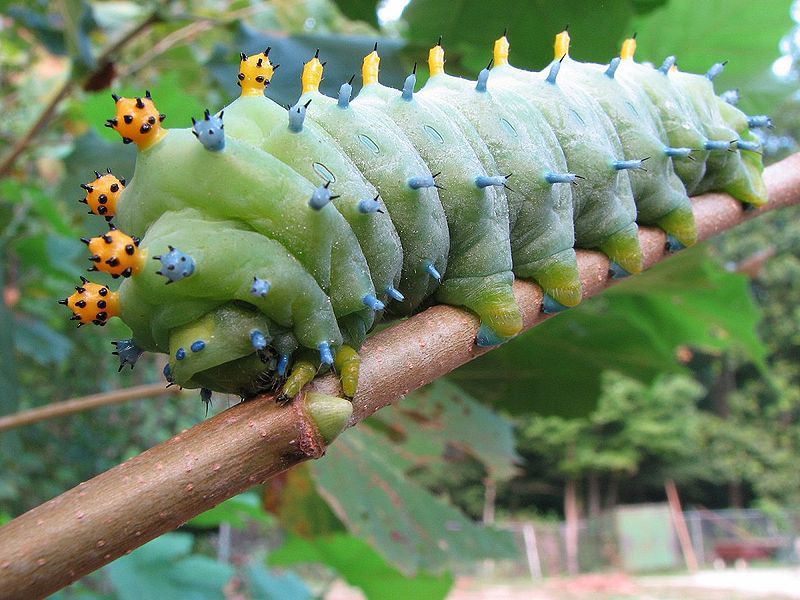
The giant silkworm moth, native to South America, is as captivating as it is dangerous. Its larvae are covered in spines that release a potent venom when touched. This venom can cause severe reactions, including bleeding disorders and even death. The adult moth, with its large, colorful wings, is an unassuming figure compared to its toxic caterpillar stage. Despite its potential for harm, this moth is a marvel of adaptation, surviving in the diverse ecosystems of the continent. Its lifecycle underscores the extraordinary strategies of survival and defense in the natural world.
Elegant Sea Snake
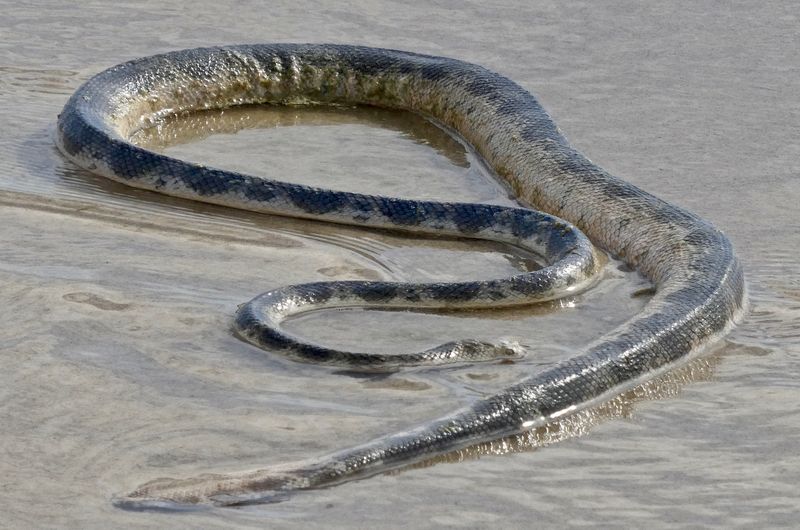
Beneath the tranquil ocean waves, the Elegant Sea Snake slithers with a grace unmatched in the aquatic world. Its slender body, adorned with mesmerizing patterns, belies a venom potent enough to subdue its prey quickly.
These creatures, often mistaken for harmless eels, possess venom more toxic than that of many land snakes. However, their reclusive nature and preference for deep waters keep them hidden from humans.
Intriguingly, the Elegant Sea Snake’s venom is a marvel of evolutionary adaptation, enabling it to thrive in the marine ecosystem. Despite its beauty, it remains a powerful predator in the ocean.

